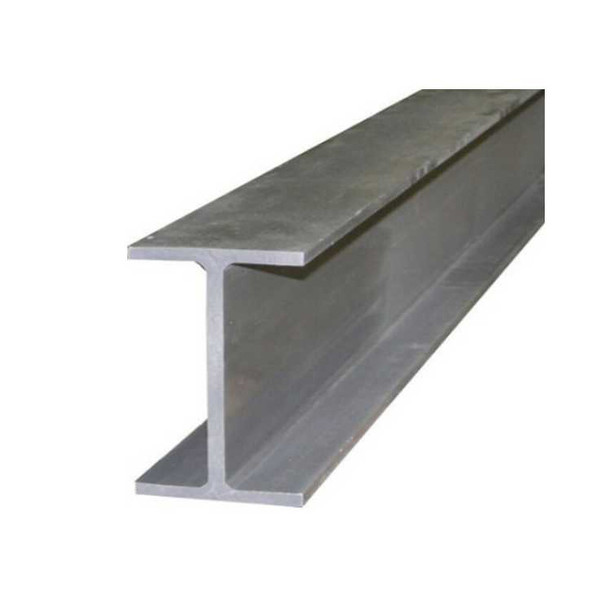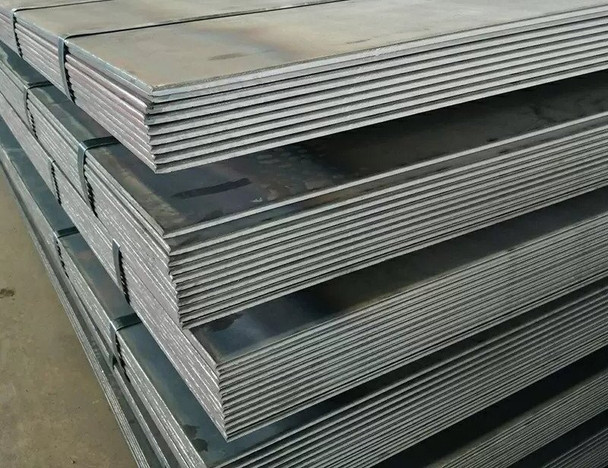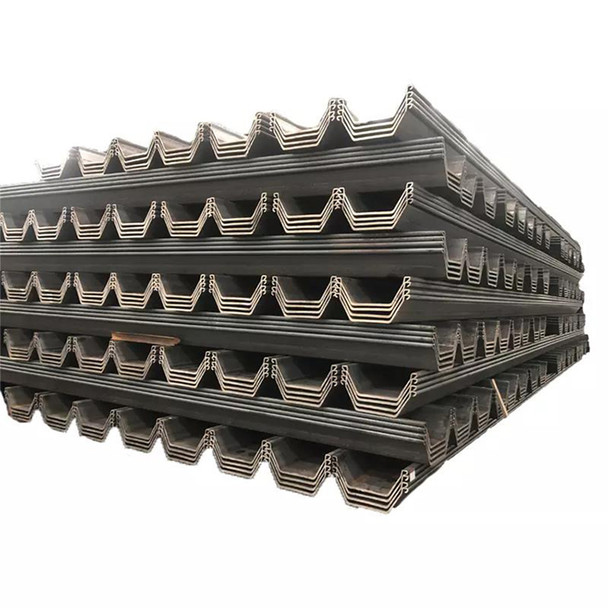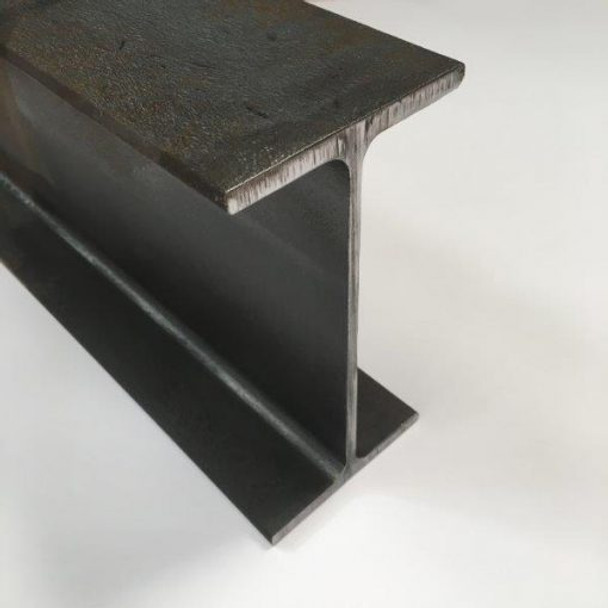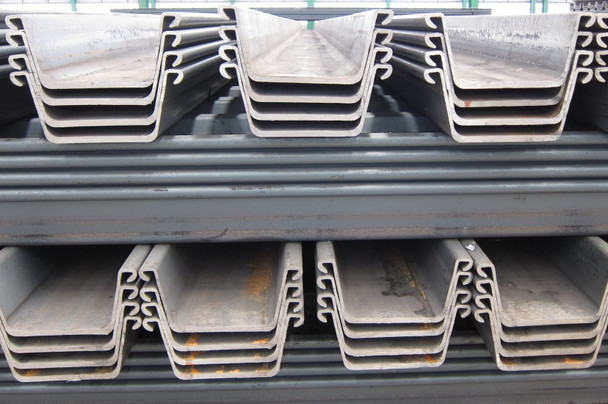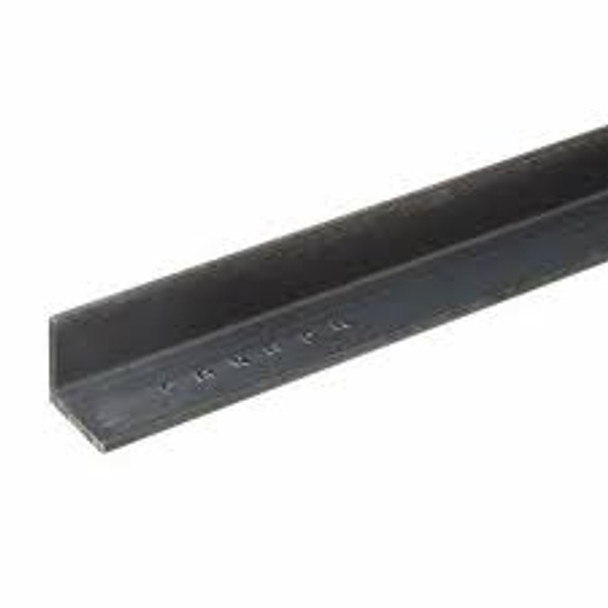How to Choose the Right Structural Steel Material for Your Project
Structural steel serves as the backbone of buildings and infrastructure, providing strength, stability, and durability. Choosing the right structural steel material is of paramount importance in construction projects. The selection of the appropriate steel material directly impacts the structural integrity and overall performance of the project. From small residential buildings to large-scale commercial complexes, choosing the right steel material is critical for ensuring safety, longevity, and cost-effectiveness.
In Nigeria, the prevalent use of low carbon steel grades in construction aligns with the specific requirements of local projects, while the demand for medium or high carbon steel and alloy steel remains relatively low. From H beams, columns, and angle bars to sheet plates, seamless pipes, and wire mesh, Nigeria relies on a diverse range of carbon steel products.
In this content we will write comprehensively on why selecting the right structural steel material is highly relevant in the field of construction. The varying different projects requirements in terms of load-bearing capacity, environmental conditions, and design considerations. Why understanding the characteristics and properties of various steel materials is essential to make informed decisions. This includes considering factors such as strength, corrosion resistance, weldability, and cost-effectiveness. By choosing the right steel material, construction professionals can ensure structural integrity, meet project specifications, and optimize performance.
Structural H steel Beam Size 300x300 80kg Hellog
Understanding Structural Steel Materials
Structural steel refers to a category of steel specifically designed and manufactured to be used in construction projects. It possesses exceptional strength, durability, and versatility, making it an ideal choice for various structural applications. There are different types of structural steel used in building construction and the purpose of structural steel is to provide the necessary support and framework for buildings, bridges, industrial facilities, and other infrastructure projects. Its ability to withstand heavy loads, resist deformation, and maintain structural integrity under different environmental conditions makes it a crucial material in the construction industry.
Types of structural steel materials
1. Carbon steel:
Carbon steel is the most common and widely used type of structural steel. It contains a small percentage of carbon, typically ranging from 0.05% to 0.25%. The presence of carbon gives carbon steel its strength and toughness, making it suitable for a wide range of construction applications. Carbon steel can further be categorized into low carbon steel, medium carbon steel, and high carbon steel, each with varying levels of strength and ductility.
2. Stainless steel:
Stainless steel is a corrosion-resistant alloy that contains a minimum of 10.5% chromium. It offers excellent resistance to rust, staining, and corrosion, making it ideal for applications where durability and aesthetics are crucial. Stainless steel is commonly used in architectural structures, bridges, and marine environments where exposure to moisture and corrosive elements is high.
3. Alloy steel:
Alloy steel is a type of steel that is alloyed with other elements, such as manganese, nickel, chromium, or molybdenum, to enhance its mechanical properties. The addition of these alloying elements improves strength, hardness, and wear resistance. Alloy steel is commonly used in high-stress applications, such as heavy machinery, construction equipment, and automotive components.
Structural Steel 6000 x1500x16mm Steel Plates
4. Tool steel:
Tool steel is a specialized type of alloy steel designed to be used in the manufacturing of tools, dies, and molds. It possesses high hardness, wear resistance, and heat resistance, making it suitable for cutting, shaping, and forming materials. Tool steel is commonly used in the production of drill bits, cutting tools, molds for plastic injection, and forging dies.
Understanding the different types of structural steel materials is crucial in selecting the right material for specific construction projects. Each type offers unique properties and characteristics that make them suitable for different applications. By considering factors such as strength requirements, environmental conditions, and budget constraints, construction professionals can make informed decisions when choosing the most appropriate structural steel material for their projects.
Factors to Consider When Choosing Structural Steel Material
1. Structural requirements and load-bearing capacity
One of the primary factors to consider when choosing structural steel material is the specific structural requirements of the project. This includes determining the load-bearing capacity needed to support the intended loads and stresses. Structural engineers analyze factors such as building codes, design specifications, and anticipated loads to determine the required strength and durability of the steel material. Factors like building height, span, and usage play a crucial role in selecting the appropriate steel grade and section shape to ensure structural integrity and safety.
2. Environmental conditions and corrosion resistance
The environmental conditions to which the structure will be exposed are important considerations in choosing the right structural steel material. Structures located in coastal or high-humidity areas, for example, are prone to corrosion due to the presence of moisture and salt. In such cases, selecting a steel material with excellent corrosion resistance, such as stainless steel or galvanized steel, is crucial to ensure long-term durability and minimal maintenance requirements. The choice of protective coatings or finishes should also be considered to enhance the steel material's resistance to corrosion.
3. Budget and cost considerations
Budget and cost considerations play a significant role in material selection for construction projects. While certain steel materials may offer superior properties, they may also come at a higher cost. It is essential to strike a balance between the desired performance and the available budget. By evaluating the project's financial constraints and considering the lifecycle cost analysis, construction professionals can make informed decisions to choose a structural steel material that offers the required performance within the allocated budget.
4. Availability and sourcing
The availability and sourcing of the chosen structural steel material are practical considerations that impact the project timeline and cost. It is important to select steel materials that are readily available from trusted suppliers or manufacturers. Consider factors such as lead times, transportation logistics, and the ability to source the required quantities of steel in a timely manner. Additionally, verifying the quality and certifications of the steel materials and ensuring compliance with industry standards is essential for project success.
By carefully evaluating these factors, construction professionals can choose the right structural steel material that meets the project's specific requirements. It is recommended to consult with structural engineers, architects, and experienced suppliers to ensure an informed decision that considers the structural, environmental, financial, and logistical aspects of the project.
Structural steel sheet pile 12mm Hellog for construction use
Evaluating the Properties of Structural steel Materials
1. Tensile strength and yield strength
Tensile strength and yield strength are important material properties to consider when choosing a structural steel material. Tensile strength refers to the maximum amount of stress a material can withstand before it breaks under tension. It is an indication of a steel material's overall strength and ability to resist external forces. Yield strength, on the other hand, refers to the stress at which a material begins to exhibit permanent deformation. It is an important factor in determining the structural integrity and limit of elastic behavior of the steel.
2. Ductility and toughness
Ductility and toughness are properties that indicate a steel material's ability to deform under stress without fracturing. Ductility refers to the steel's capacity to undergo plastic deformation, allowing it to be shaped and formed without breaking. It is a desirable property for structural steel as it enables flexibility and ease of fabrication. Toughness, on the other hand, measures a material's ability to absorb energy and resist fracture. A tough steel material is capable of withstanding impact and sudden loadings, making it suitable for structures subjected to dynamic forces.
3. Weldability and machinability
Weldability and machinability are important considerations, especially during the fabrication and construction processes. Weldability refers to a steel material's ability to be welded without significant issues such as cracking or brittleness. It is crucial for joining steel components and ensuring the integrity of the structure. Machinability, on the other hand, refers to the ease with which a steel material can be cut, drilled, and shaped using machining processes. Materials with good machinability can be efficiently worked on during fabrication, reducing production time and costs.
When evaluating material properties, it is essential to refer to industry standards and specifications specific to structural steel. These standards provide guidelines for the acceptable values and requirements for tensile strength, yield strength, ductility, toughness, weldability, and machinability. Additionally, considering the project's specific requirements and the anticipated loads and forces acting on the structure is crucial in determining the necessary material properties.
By carefully evaluating these material properties, construction professionals can select a structural steel material that meets the project's performance requirements and ensures the structural integrity, durability, and safety of the completed structure. It is recommended to consult with experts, such as structural engineers and steel suppliers, to ensure the appropriate material selection based on the project's specific needs and specifications.
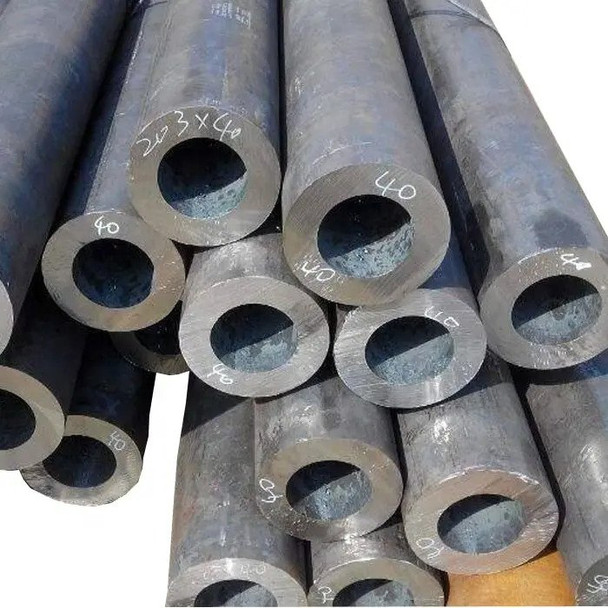
Structural Steel 4" SCH 80 x12m Coated line pipes
Comparison between stainless steel, Aluminium and copper
| Aspect | Stainless Steel | Aluminum | Copper |
| Strength | High tensile and yield strength | Relatively lower strength compared to steel | Lower tensile strength than steel |
| Corrosion Resistance | Excellent corrosion resistance | Good corrosion resistance | Excellent corrosion resistance |
| Weight | Heavier than aluminum, lighter than copper | Lighter than steel and copper | Heavier than aluminum, lighter than steel |
| Durability | Highly durable and long-lasting | Moderately durable | Highly durable and long-lasting |
| Malleability | Less malleable than aluminum | Highly malleable and easy to form | Highly malleable and easy to form |
| Conductivity | Lower electrical and thermal conductivity | Excellent electrical and thermal conductivity | Excellent electrical and thermal conductivity |
| Cost | Relatively higher cost | Moderate cost | Relatively higher cost |
| Aesthetics | Offers a modern and sleek appearance | Can provide a contemporary look | Can provide a classic and elegant look |
| Sustainability | Recyclable material | Highly recyclable | Recyclable material |
Please note that this is a general comparison and specific properties and performance may vary depending on the alloy or grade of the material used. Additionally, the suitability of each material for a particular construction project may also depend on factors such as the intended use, environmental conditions, and design requirements.
Assessing Application Needs of Structural steel Materials
Choosing the right structural steel material involves assessing the specific needs of the application. Consider the following factors when evaluating the application requirements:
1. Construction Projects and Building Types
Different construction projects and building types have unique demands that must be considered when selecting a structural steel material. For example, high-rise buildings require steel materials with exceptional strength and load-bearing capacity to support the weight of multiple floors. Industrial structures, such as warehouses or factories, may require steel materials with corrosion resistance properties to withstand harsh environments. Residential buildings, on the other hand, may prioritize cost-effectiveness without compromising on structural integrity. Understanding the nature of the construction project and its specific requirements is crucial for determining the appropriate structural steel material.
Structural Steel H-beam 160 IPE 6x3 Hellog
2. Structural Components and Design Considerations
Each structural component within a project may have distinct requirements that impact the choice of steel material. Beams, columns, trusses, and connections all play crucial roles in the structural system. For example, beams may require steel materials with high tensile strength to bear heavy loads over long spans, while columns may need materials with excellent compressive strength. Additionally, the design considerations such as deflection limits, fire resistance, and seismic performance influence the selection of the structural steel material. Collaborating with structural engineers and architects to assess the specific design requirements is essential for making an informed decision.
3. Industry-Specific Requirements
Certain industries have specific requirements that need to be addressed when choosing a structural steel material. For instance, the oil and gas industry may require materials with excellent resistance to corrosion and high-temperature environments. The automotive industry may prioritize steel materials with specific mechanical properties for manufacturing vehicle components. Each industry may have its own set of standards and regulations that dictate the appropriate structural steel material. Considering industry-specific requirements ensures compliance and optimal performance in the intended application.
By thoroughly assessing the application needs, construction professionals can identify the key considerations that will drive the selection of the right structural steel material. This evaluation process involves understanding the type of construction project, the specific requirements of structural components, and any industry-specific considerations. By aligning the material selection with the application needs, it is possible to optimize the structural performance, durability, and overall success of the project. Consulting with experts in the field, such as structural engineers, architects, and industry professionals, can provide valuable insights and guidance throughout the decision-making process.
Consulting with Experts and Suppliers
When it comes to choosing the right structural steel material for your project, seeking the advice and expertise of professionals is invaluable. By consulting with experts and suppliers at Tikweld product and services, and GZ Industrial Supplies e.t.c you will gain valuable insights and guidance that will help you make informed decisions. Consider the following aspects of consulting with experts and suppliers:
1. Engaging Structural Engineers and Architects
Structural engineers and architects are vital members of the construction team who possess specialized knowledge in designing and constructing structures. They understand the intricacies of structural systems and can provide valuable input on material selection. Engaging with these professionals early in the project planning phase allows them to assess the specific requirements, analyze the structural loads, and recommend the most suitable structural steel materials based on their experience and expertise. Their insights can help ensure the structural integrity and safety of the project while optimizing cost-efficiency.
Structural Steel Sheet Pile 12mm Hellog
2. Collaborating with Steel Suppliers and Manufacturers
Steel suppliers and manufacturers such as Tikweld welding supplies and GZ Industrial supplies play a crucial role in the material selection process. They have in-depth knowledge about the various types of structural steel materials available in the market, including their properties, strengths, and limitations. By collaborating with reputable steel suppliers, you can benefit from their expertise in recommending the right steel grades and products based on your project's requirements. They can provide valuable information on the availability of specific steel materials, pricing, delivery schedules, and any additional services such as fabrication or customizations. Building strong relationships with reliable suppliers ensures access to high-quality materials and reliable support throughout the project.
3. Seeking Professional Advice and Guidance
In addition to structural engineers, architects, and steel suppliers, there are other professionals who can offer valuable advice and guidance in the material selection process. This may include construction project managers, consultants, or industry experts with extensive experience in structural engineering and construction. These professionals can provide insights into best practices, emerging trends, and innovative solutions for selecting structural steel materials. Their knowledge can help you navigate complex project requirements, optimize material performance, and overcome any challenges that may arise during the selection process.
By consulting with experts and suppliers, you can tap into a wealth of knowledge and experience that will assist you in choosing the right structural steel material for your project. Engaging structural engineers and architects ensures that the material selection aligns with the project's design and performance goals. Collaborating with steel suppliers and manufacturers allows you to access a wide range of options and benefit from their expertise. Seeking professional advice and guidance broadens your perspective and ensures that you consider all relevant factors during the decision-making process.
Remember, the key to a successful material selection process is open communication, collaboration, and a willingness to leverage the expertise of professionals in the field. By working together with experts and suppliers, you can make well-informed decisions that will lead to the optimal choice of structural steel material for your project, resulting in a safe, durable, and efficient structure.
A Guide to Making an Informed Decision
Choosing the right structural steel material for your project requires careful analysis and consideration of various factors. Making an informed decision involves analyzing project specifications and requirements, as well as finding the right balance between performance, cost, and sustainability. Let's delve deeper into this process:
1. Analyzing Project Specifications and Requirements
To choose the most suitable structural steel material, it is essential to thoroughly analyze the project's specifications and requirements. Consider factors such as the intended use of the structure, load-bearing capacity, environmental conditions, design aesthetics, and durability expectations. Each project has unique demands, and understanding these requirements is crucial for selecting the appropriate steel grade and properties.
Take into account the structural design, including the type of structure, its dimensions, and the anticipated loads it will bear. Consider factors such as seismic activity, wind loads, and potential exposure to corrosive environments. Understanding these specifications will help determine the necessary strength, ductility, and corrosion resistance of the steel material.
Structural Rolled Steel Angle bar 40x40x6mm Hellog
2. Balancing Performance, Cost, and Sustainability
When choosing a structural steel material, it is essential to strike a balance between performance, cost, and sustainability. Performance refers to the material's mechanical properties, including its strength, ductility, toughness, and weldability. Consider the structural requirements and determine the appropriate steel grade that can meet these demands.
While performance is crucial, it is equally important to consider the cost implications. Evaluate the overall budget for the project and identify the steel material that provides the desired performance characteristics at a reasonable cost. This includes considering factors such as the initial material cost, fabrication expenses, and long-term maintenance requirements. Opting for a cost-effective solution without compromising on performance is a key consideration.
In addition to performance and cost, sustainability is an increasingly important aspect of material selection. Assess the environmental impact of the chosen steel material throughout its lifecycle, including extraction, production, transportation, and end-of-life considerations. Look for steel materials with recycled content or those that can be easily recycled at the end of their service life. Consider certifications such as LEED (Leadership in Energy and Environmental Design) that promote sustainable building practices.
By carefully analyzing project specifications and requirements and balancing performance, cost, and sustainability, you can make an informed decision when selecting the right structural steel material for your project. This ensures that the chosen material aligns with the project's needs while considering economic and environmental factors.
Remember, consulting with experts, such as structural engineers, architects, and steel suppliers, can provide valuable insights during this decision-making process. Their expertise and experience can guide you in selecting the optimal steel material that meets the project's requirements and achieves the desired performance, cost-effectiveness, and sustainability. By making an informed decision, you can confidently proceed with your construction project, knowing that you have chosen the right structural steel material for long-term success.
Conclusion
selecting the right structural steel material requires careful evaluation, consultation, and analysis. By considering the information provided in this guide and following a systematic approach, you can confidently choose the appropriate material for your construction project. Remember, the right choice of material contributes to the structural integrity, longevity, and overall success of your project. In this content we have enlightened that selecting the right structural steel material is of paramount importance in ensuring the success and longevity of your construction project. By considering various factors and following a systematic approach, you can make an informed decision that aligns with your project's specifications, requirements, and goals.
Consulting with our experts at Tikweld welding supplies and services, including structural engineers, architects, and steel suppliers, during the decision-making process. Their knowledge and experience can provide valuable insights and guidance to ensure the optimal material choice.
Lastly, we emphasized the significance of making an informed decision by analyzing project specifications and requirements, and balancing performance, cost, and sustainability. By considering these factors, you can choose a structural steel material that meets your project's needs while considering economic feasibility and environmental impact.
Recent Posts
-
What size of generator do I need for welding?
Welding projects vary greatly in their power demands, which can affect the efficiency and safety of …19th Apr 2024 -
Top Transformer Suppliers in Nigeria: Where to Find the Best Prices
In Nigeria’s rapidly expanding industrial landscape, transformers play a pivotal role in ensuri …18th Apr 2024 -
The Ultimate Guide to Choosing the Best Electrical Wire for Your Projects in Nigeria 2024
Electrical wiring is crucial across various industries, ensuring safety, operational reliability, an …15th Apr 2024


